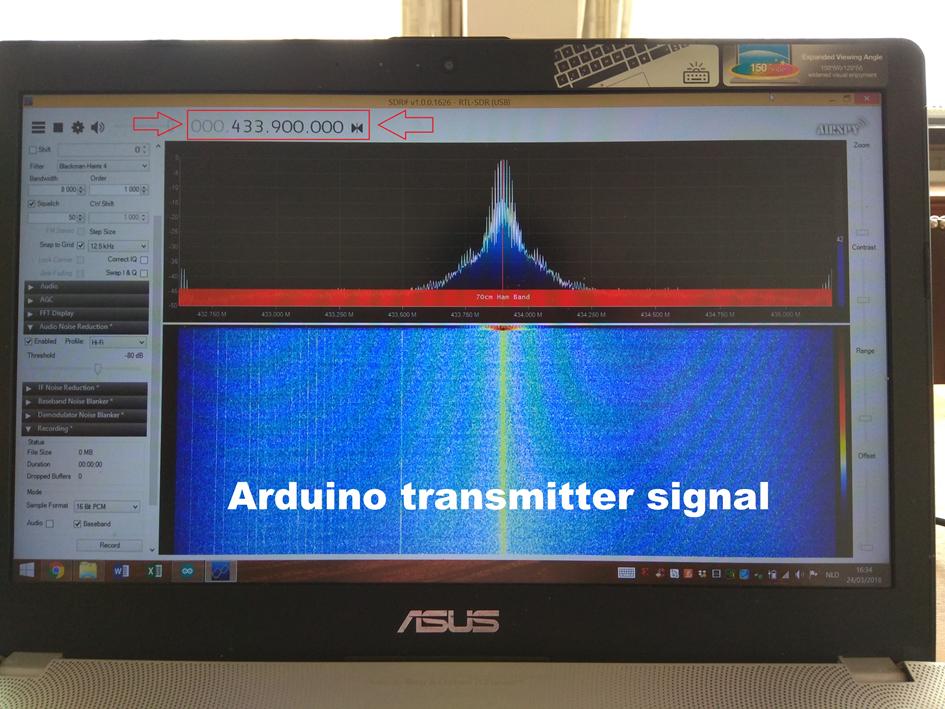I have these remote controlled wall outlets (Brennenstuhl Funkschalt-Set RCS 2044 N Comfort). And I'm trying to make an arduino circuit with an RF transmitter so I can switch them on and off without the remote.
I sniffed the signal from the remote with an RTL-SDR and found out that the signal frequency is 434 MHz. So I went online and ordered an 434 MHz transmitter (from sparkfun).
After I hooked the transmitter to my arduino and wrote the code with the exact same signals as the remote had send out. I tested the circuit and saw that it didn't work.
So to see where it went wrong I also sniffed my signal from the RF transmitter, to see if it's the same as the one from the remote. And I found out that the frequency of my 434 MHz transmitter is actually 433.92 MHz.
But this turned out that it wasn't a mistake. But the chip in the datasheet even says that it is 433.92 MHz. And when I went online to find a real 434 MHz transmitter I couldn't find one, because all the 434 MHz transmitters that I found were also actually 433.92 MHz.
So then I tought how the hell has my remote a 434 MHz transmitter if I can't find one? And I screwed it open and saw in the casing that even the transmitter of the remote is 433.92 MHz. But for some reason it sends out a 434 MHz signal. So it must have some kind of circuit inside that modifies the 433.92 MHz to 434 MHz.
And now my question to you is:
How can I do that? How can I modify a 433.92 MHz signal to a 434 MHz signal?
Thanks in advance!
(I uploaded some pictures of the remote, the wall outlet, the RTL-SDR, the RTL-SDR captures on my laptop, The (simple) arduino circuit and the transmitter module)








